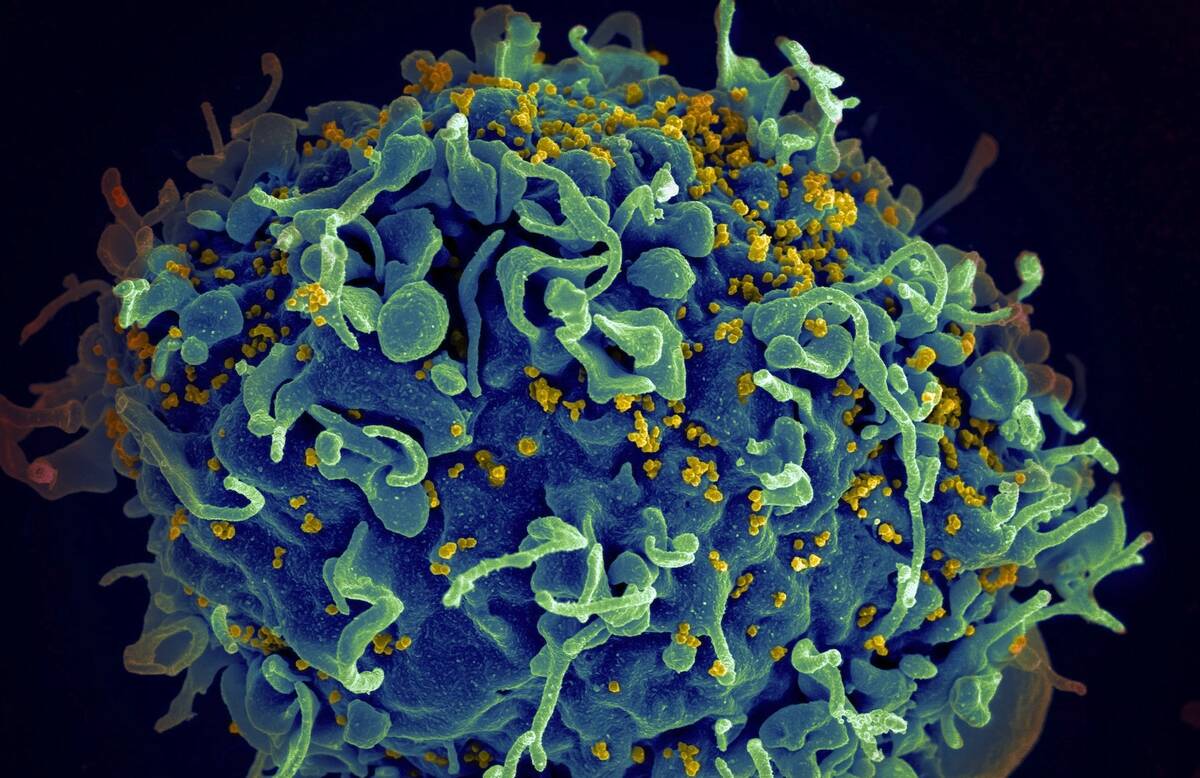A local researcher’s work may revolutionize treatment of cancer, AIDS, other diseases
Groundbreaking research will be unveiled Thursday on how HIV enters cells, a discovery that could produce new treatments for AIDS and other diseases, said the Touro University Nevada researcher who led the study.
Research over eight years identified a pathway that the virus causing AIDS uses to enter the nucleus of a healthy cell, Dr. Aurelio Lorico, interim chief research officer at Touro, the state’s largest medical school, said in an interview late Wednesday. Once the virus enters the nucleus, it can replicate and invade more cells.
Researchers also identified three proteins the virus needs to enter the cell, said Lorico, senior author of the study to be published Thursday in the prestigious science journal Nature Communications.
Importantly, they also developed drugs — synthesized molecules — that target one of the proteins, halting the infection, he said.
“This is essentially not a new drug. This is a completely new, revolutionary approach to diseases,” said Lorico, who has been a researcher at Touro for five years.
The newly identified pathway begins with the virus entering a cell wrapped inside a membrane package, called an endosome. The virus-containing endosome then pushes the protective nuclear membrane inward, forming an indentation.
The endosome then moves inside the indentation to its inner tip, where the virus slips into the nucleus, according to the study by a collaboration of researchers from Touro University Nevada College of Osteopathic Medicine, Touro College of Osteopathic Medicine in New York, Biotechnology Center (BIOTEC) of TUD Dresden University of Technology in Germany, and Italy.
The study identified the three proteins critical to the invasion of the nucleus as Rab7, located on the membrane of the endosome; VAP-A on the nuclear membrane; and ORP3, which connects the first two proteins.
The researchers first discovered the pathway to the nucleus in studying how cancer metastasizes. The pathway appears to have a role in the metastatic process, making the new drugs promising in terms of cancer treatment. New therapies derived from the discovery would target the metastatic process itself, said Lorico, who for 40 years was a cancer researcher, most recently with the Nevada Cancer Institute and before that with Yale University.
The discovery of the pathway also has implications for the treatment of Alzheimer’s disease, he said.
The patent is pending for the new drugs, which have undergone preliminary study but not clinical trials in humans, which Lorico estimated are a couple years off. Following trials in humans, it could be several more years before a drug derived from the research could receive approval from federal regulators, a timeline that depends on funding.
With funding scarce, Lorico said he designed the drugs, purchased chemicals and then shipped them to Italy, where the drugs were produced on a small scale. The preliminary testing was then done in the United States.
With the researchers’ discoveries no longer flying under the radar, two dozen new collaborators have joined in the research, most of them in the past six months, Lorico said.
“We have a potential to begin battling these diseases,” he said. “We are moving as fast as we can.”
Contact Mary Hynes at mhynes@reviewjournal.com. Follow @MaryHynes1 on Twitter. Hynes is a member of the Review-Journal’s investigative team, focusing on reporting that holds leaders and agencies accountable and exposes wrongdoing.

















